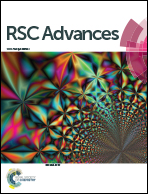Fabrication and cell viability of injectable n-HA/chitosan composite microspheres for bone tissue engineering
Abstract
Composite microspheres based on nano-hydroxyapatite (n-HA)/chitosan (CS) with different weight ratios were fabricated by an emulsion method and using natural vanillin as a cross-linking agent. FT-IR, XRD, TGA, SEM and laser particle size analysis were used to characterize their physico-chemical properties. Live-dead cell staining and MTT assay were used to evaluate cell viability and cytocompatibility. The results showed that the rod-like n-HA crystals could be incorporated into the CS matrix in a relatively high level up to 29.57 wt%. The encapsulation efficiency of n-HA in the composite microspheres was between 29.50–73.93%. The composite microspheres with a diameter of 10.9–55.0 μm and good swelling properties should be easy to inject into irregular bone defects. The studies of in vitro biodegradation and cell culture using MG63 cells demonstrated that the vanillin-crosslinked n-HA/CS microspheres could be degraded in a sustained and controlled behavior while supporting cell growth, thus acting as worthy candidates for a multifunctional injectable matrix in bone tissue engineering.


 Please wait while we load your content...
Please wait while we load your content...